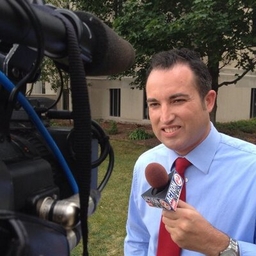
Caitlin Looby
Freelance Editor and Writer at Freelance
Great Lakes Reporter at Milwaukee Journal Sentinel
Great Lakes reporter @journalsentinel via @Report4America || Climate & soil scientist || Story tips: [email protected] || she/her
Articles
-
2 weeks ago |
sooeveningnews.com | Caitlin Looby
Scientists are experimenting with methods to remove invasive zebra and quagga mussels from Lake Michigan. Early evidence suggests the round goby, another invasive species, may be helping control mussel recolonization in areas where they've been removed. The project faces funding challenges due to federal cuts and reduced university funding.
-
3 weeks ago |
wisconsinrapidstribune.com | Caitlin Looby
Scientists are experimenting with methods to remove invasive zebra and quagga mussels from Lake Michigan. Early evidence suggests the round goby, another invasive species, may be helping control mussel recolonization in areas where they've been removed. The project faces funding challenges due to federal cuts and reduced university funding.
-
3 weeks ago |
eu.greenbaypressgazette.com | Caitlin Looby
Harvey Bootsma and a team of divers peeled thousands of invasive mussels off a rocky reef near Sleeping Bear Dunes National Lakeshore in Michigan during summer 2015. Armed with only paint scrapers, they covered an area roughly twice the size of a pickleball court. The goal was to find out if invasive zebra and quagga mussels promoted the growth of nuisance algae along the shoreline.
-
4 weeks ago |
jsonline.com | Caitlin Looby
The U.S. Army Corps of Engineers released a draft environmental review for Enbridge's Line 5 Tunnel project, accepting public comments through June. The tunnel project, fast-tracked by the Trump administration, aims to house the Line 5 pipeline under the Straits of Mackinac. Great Lakes tribes and environmental groups oppose the project, citing concerns about the aging pipeline's safety and potential environmental impact.
-
1 month ago |
yahoo.com | Caitlin Looby
The Great Lakes has officially entered a new climate era, and the past is no longer a reliable guide for the future. That's the landmark finding in a new study by researchers at the University of Michigan, who concluded that in this new era, extremes increasingly will become more extreme.
Journalists covering the same region

Pari Apostolakos
Multimedia Journalist at WGBA-TV (Green Bay, WI)
Pari Apostolakos primarily covers news in the Fox Valley region of Wisconsin, United States, including areas around Appleton and Oshkosh.

Margaret Cahill
Margaret Cahill primarily covers news in the Fox Valley region of Wisconsin, United States, including areas around Appleton and Oshkosh.

Daphne Lemke
Business Reporter at Fond du Lac Reporter
Daphne Lemke primarily covers news in the Fox Valley region of Wisconsin, United States, including areas around Appleton and Oshkosh.

Abigail Hantke
Weekend Anchor and Reporter at WGBA-TV (Green Bay, WI)
Abigail Hantke primarily covers news in Wisconsin, United States, including areas around Madison and Milwaukee.

Jason Zimmerman
News Reporter at WBAY-TV (Green Bay, WI)
Jason Zimmerman primarily covers news in the Fox Valley region of Wisconsin, United States, including areas around Appleton and Oshkosh.
Try JournoFinder For Free
Search and contact over 1M+ journalist profiles, browse 100M+ articles, and unlock powerful PR tools.
Start Your 7-Day Free Trial →Coverage map
X (formerly Twitter)
- Followers
- 1K
- Tweets
- 1K
- DMs Open
- No

RT @SCarson_News: Curious about my beat? Read about how I approach my reporting here (no paywall). Thanks to @mdesisti for making me look m…

RT @madeline_heim: My first byline in @grist!!!

RT @natalie_eilbert: Really powerful (and terrifying) story out this morning by @caitlooby on why this hurricane season matters even for st…